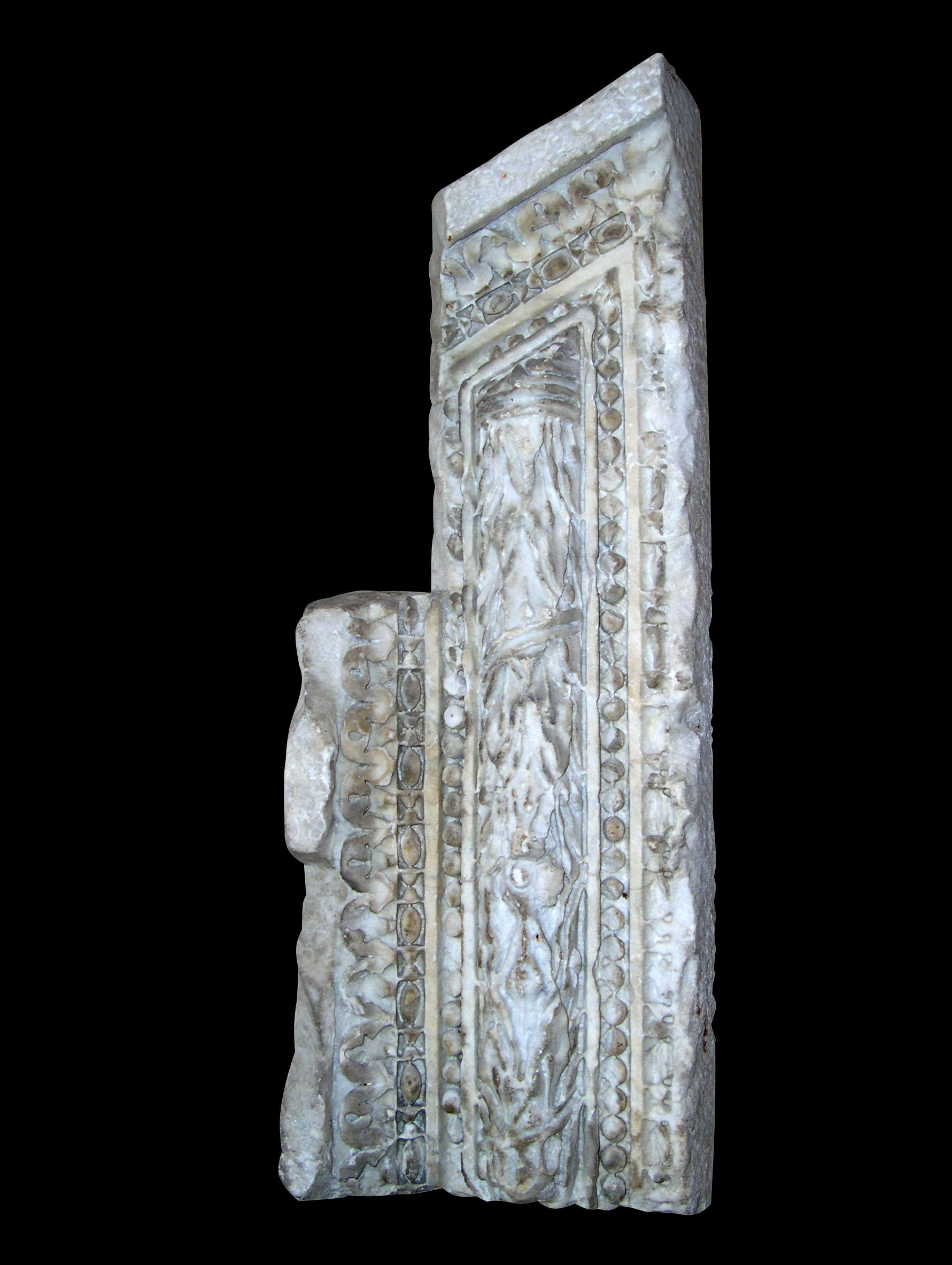Panel with soffit of architrave
Panel carved in white marble, chipped along the margins, with left angular portion and lower quarter missing, both cut already in antiquity presumably for reuse. At the centre, the panel is cut with a narrow rectangular lacunar bearing a garland of laurel leaves, held together by a thin band and arranged in a symmetrical pattern converging towards the focus of the composition, the latter feebly marked by a small, rounded acorn. The leaves, devoid of lateral ribs, are characterised by a softly creased face and slightly undulating margins. The central lacunar is surrounded by a series of concentric ornaments which entirely fill up the available space; going from the inside towards the outside we find: a pair of thick flat fillets separated by a line of spherical beads, followed by an astragal cut with oval beads and so called “hat shaped” reels, and lastly by a vegetalized Lesbian kyma featuring semicircular bands with indented inner margins. On the left side, the entire decorative sequence complies with the shape of the slab which has, in fact, a peculiar trapezoidal construction, with an acute angle of roughly 60°. The nature itself of the decorative elements and their arrangement allow us to identify this find with a soffit of an architrave and, more specifically, its peculiar trapezoidal shape indicates that it was originally part of an engaged order set within an articulate architecture, that is characterised by projecting and retreating features, such as the scaena frons of a monumental nymphaeum, of a theatre, etc. One must not be surprised that the architrave has not been carved out of a single block of marble, since not seldom, in order to reduce the costs and amounts of work, the various elements of the entablature were made of a local stone core veneered with marble slabs. Our exemplar most probably dates to the Flavian age, a chronological horizon to which points out not only the multiplication of ornaments that fill up the entire available space, but especially the presence of the astragal cut with the so called “hat shaped” reels, a very peculiar decorative form which finds close comparisons with the architraves belonging to the Flavian Palace on the Palatine Hill, the Forum of Nerva in Rome and to the Villa of Domitian in Castel Gandolfo. Such dating would also fit very well with the structural function of our piece, since in Flavian times architecture becomes increasingly articulate, with a proliferation of mixtilinear prospects, broken angles and curved sects.







